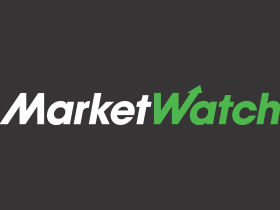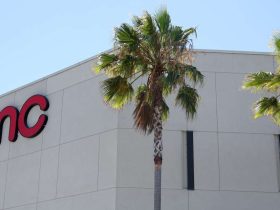There’s a three-block stretch of Fifth Avenue near Barron’s Manhattan offices that you could call Lycra Way. Within a three-minute walk, shoppers can visit multistory outposts of
Lululemon Athletica,
Alo Yoga,
Adidas,
and
Puma,
all of which are packed with a rainbow-colored assortment of leggings, bra tops, hoodies, shorts, and every other imaginable item of athletic-themed apparel.
This sporty section of one of the world’s most famous shopping streets speaks to consumers’ seemingly unquenchable thirst for athleisure, a category that fuses athleticwear with loungewear and has become Americans’ de facto uniform. In a January poll from market research firm Appinio, nearly three-quarters of respondents said they wear workout clothes in their day-to-day life. And as hybrid work schedules and relaxed dress codes have blurred the lines between workwear and the rest of our wardrobes, athleisure companies have lept on the chance to become office apparel providers too, with many now selling blazers, button-downs, and tailored trousers, all in the same easy, stretchy fabrics as their gym wear.
“Activewear has really just solidified itself into our wardrobes,” says Circana analyst Kristen Classi-Zummo. “It’s just the way that we’re dressing now.”
The dominance of the trend has turned what used to be just a subset of the athletic apparel sector into a full-blown industry with a valuation of more than $350 billion globally, according to Grand View Research. It has also spurred a glut of competition. While there’s arguably still just one pure-play public athleisure company—Lululemon (ticker: LULU)—the market also includes all the established and upstart sportswear and shoe makers; mainstream apparel giants such as
Gap
(GPS), which has its own athleisure label in Athleta; and a host of smaller, private brands, including Alo Yoga, Outdoor Voices, and Vuori. Classi-Zummo estimates that in the three years following the pandemic, around 200 new brands have entered the athleisure market.
The challenge now, especially for dominant players such as Lululemon, is gaining, or at least maintaining, market share, says Classi-Zummo. Some of the same factors that make athleisure one of the highest-margin sectors of apparel—a reliance on inexpensive synthetic fabrics such as nylon and spandex, relatively simple garments, limited change in products from season to season—also make it difficult to create a competitive advantage. Apparel patents are rare, fabrics are easy to reproduce, and there are only so many ways to redesign sports bras, joggers, and sweatshirts. The challenge is easy to grok even if you aren’t a retail expert: Take away the branding, and could you really spot the differences in a pile of black leggings from, say, Adidas (ADS), Alo, and Athleta?
The last is a prime example of how it can go wrong. Athleta was Gap’s crown jewel throughout the pandemic. Same-store sales for fiscal 2021 rose by 39% compared with fiscal 2019, the company said. By May 2022, however, the segment started losing ground as Athleta struggled with “product acceptance challenges”—i.e., making apparel that resonated with shoppers. And while the Gap is attempting to turn things around (including replacing Athleta’s CEO), the athleisure brand hasn’t yet found its way back to growth: In Gap’s most recent quarter, Athleta’s same-store sales declined by 7%, with overall revenue down 1%.
Below, a look at the current athleisure marketplace, and which companies investors looking to play the trend should consider—and avoid.
Pure-Play Athleisure
You can’t talk about athleisure without talking about Lululemon, which played a major role in defining the category—and in making it investible in the wake of its 2007 initial public offering. As Lululemon established itself in the 2010s, it picked up market share by appealing to the tastes of women in a way its shoe companies-turned-athletic-brand competitors didn’t, says Abbie Zvejnieks, an analyst at Piper Sandler. From 2016 to 2022, Lululemon’s slice of the U.S. sportswear pie grew from 1.8% to nearly 4%, according to GlobalData. In the same time frame,
Nike’s
(NKE) market share fell from 20.7% to 16.3%.
Lululemon’s business has exploded as shoppers cast aside their “hard pants” during the pandemic and beyond. Its revenue surged 42% year over year in fiscal 2021 and another 30% last year. Its stock has followed a similar trajectory, gaining around 90% since March 2020, outperforming the
S&P 500 index’s
48% gain. The shares are outperforming the market again this year, even as the overall retail sector has lagged behind. Lululemon joined the S&P 500 for the first time Wednesday.
Analysts who are bearish on the company point to missteps such as its acquisition of Studio Mirror (Lululemon is now winding down the in-home workout-device maker), and predict a slowing of the larger market. Jefferies’ Randal Konik, one of three analysts with a Sell rating out of the 35 tracked by FactSet, says fashion may have reached peak athleisure during the pandemic and is reverting toward more structured clothes. He also argues the company, whose leggings pricing often starts at around $100 a pair, could suffer as consumer budgets tighten.
“Our simple message is: Nothing good tends to last forever, particularly in apparel,” says Konik.
Still, the majority view on Wall Street is that athleisure will remain strong and that Lululemon will hold on to its industry-leading position. Zvejnieks says the company stands out for its proven ability to introduce new, popular products and gain market share across new categories, such as men’s activewear, running, and training.
“Their results are a testament of that,” she says. “They’re keeping up with product innovation and providing a product that consumers want even when they’re being much more selective in the current environment.”
Athleisure—and More
Investors who aren’t sold on Lululemon but remain interested in adding some fashionable spandex to their portfolios might look to the big athletic or apparel companies.
When athleisure was taking root a decade or so ago, disrupters such as Lululemon and Athleta were successful in siphoning off women’s apparel customers from established players such as
Under Armour
(UAA), Puma (PUM.Germany), Adidas, and Nike. Some have been more effective than others in clawing it back. Nike, a Barron’s stock pick, brought in nearly $14 billion in apparel revenue in fiscal 2023 globally, up 8% year over year, excluding currency fluctuations.
Another athletic company to watch is
On Holding
(ONON), which has been on a tear recently, with shares up a little over 50% for the year. The main driver of the company’s growth has been demand for its patented shoe technology, but On is also successfully expanding into new categories, including apparel. Over the past two quarters, the company says clothing sales have grown by more than 45% year over year.
Among the broader apparel companies, the Street is cautious on Athleta’s parent company, Gap, which is still in the early stages of its attempted turnaround. For a stronger bet, consider 2022 Barron’s stock pick
American Eagle Outfitters
(AEO), which has seen strength from Aerie, the company’s active and intimates segment; for the past six quarters, Aerie’s revenue growth has outpaced that of American Eagle’s flagship brand. American Eagle shares are up 30% this year.
Private Players
Some of the hottest athleisure brands are smaller labels such as Alo Yoga, Outdoor Voices, and Vuori. Vuori’s store foot traffic surged by 704%, on average, in the first eight months of 2023 compared with the same period in 2019, according to data from Placer.ai. Alo, a favorite of celebrities and influencers, saw foot traffic rise by 120% during the same time frame. The company reportedly recorded over $1 billion in sales in 2022, nearly doubling its year-over-year growth. Alo declined to confirm the revenue estimate to Barron’s, saying it doesn’t share financial information.
While these companies are privately held, they should be on investors’ radar for two reasons: first, because their popularity and rapid growth are challenges to the bigger players, and second, because analysts expect to see at least a couple of them following in the footsteps of disrupters such as On, which went public in 2021.
Sky Canaves, an analyst at Insider Intelligence, is in that camp. She posits that Vuori, known for its soft fabrics and men’s joggers, would be an attractive candidate for an initial public offering. The company received a $400 million investment and $4 billion valuation from SoftBank in 2021, and has since been growing aggressively. Alo Yoga could be another candidate, she added. Neither company has made any comments on their intentions to go public, and both declined Barron’s requests for comment.
One thing seems certain: Athleisure has become a fixture of postpandemic life. “This isn’t a trend, this isn’t a fad,” says Classi-Zummo, the Circana analyst. “It has really solidified itself into our closets.”
Write to Sabrina Escobar at sabrina.escobar@barrons.com
Read the full article here













Leave a Reply